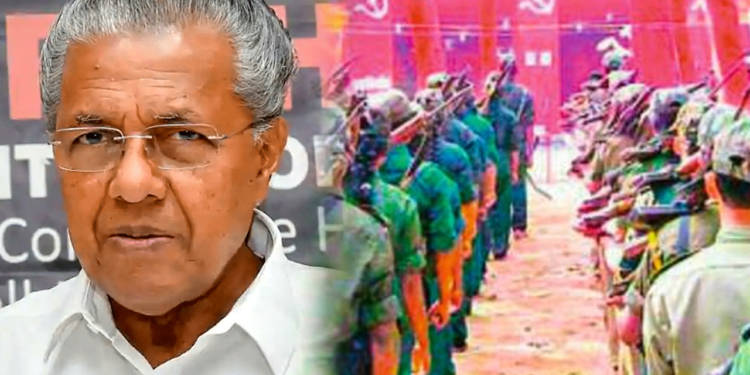At a time when Naxalism is losing ground across the country, recent reports suggest that Naxalism has found safe havens in the state of Kerala which is currently administered by the CPI (M)-led Left Democratic Front (LDF). According to a latest TOI report, there have been intermittent efforts by Naxals in Southern India, especially in the state of Kerala to re-establish themselves in areas of influence over the last 10 years.
In what shows that Kerala has become the hotspot of Naxalism within South India, the Maoist leadership has been withdrawing its cadres from the states of Andhra Pradesh, Tamil Nadu and Karnataka. They are being redeployed in the state of Kerala after being withdrawn from the aforementioned states.
What makes this redeployment process somewhat easier for the Naxals is the fact that the state borders are more porous and there is less policing. According to Gurmeet Kanwal, defence analyst at the Institute of Defence Studies and Analyses, “State borders are less policed and so Naxal movement is easy there. But there needs to be more specific intelligence on their movement and where they will hit next.”
The area which Naxals have been targeting is the tri-junction of the states of Kerala, Tamil Nadu and Karnataka (KKT tri-junction). As per an intelligence report reviewed by Livemint last year, the main recruitment of the naxals takes place from the states of Karnataka and Chhattisgarh.
However, they prefer to stay in the Kerala side of the Western Ghats which shows how Kerala has emerged as a safe haven for Naxalism. The Naxals have made significant inroads into the tribal areas of Kannur, Palakkad, Wayanad and Malappuram districts. Kerala has also been facing fire from the Centre owing to its lackadaisical approach in combating Naxalism.
The Maoists have established their base and training grounds deep inside the KKT tri-junction jungles, the same space that was once occupied by sandalwood smuggler Veerappan for over thirty years. Over the last two years, there have also been several alerts about arms training being delivered to the Naxal cadres in the tri-junction jungles. Forces are yet to confirm the presence of central committee members of CPI (Maoist) in these jungles. However, it is clear that Naxals have been trying to open their bases through their Western Ghats Special Zonal Committee (WGSZC) in these areas, with primary focus on the state of Kerala.
What makes Kerala that much more vulnerable to Maoism is the conducive political atmosphere that Maoists find in Kerala. Kerala politics is left dominated and with CPI (M) led currently in power, the Maoists enjoy an ideological advantage. Vijayan government in Kerala could be facing internal pressures to go soft on Naxalism, especially in light of a rift between the two ruling allies CPI and CPI (M) over a recent encounter in Palakkad district of the state. CPI went all guns blazing over the police action and even demanded a Magisterial probe into the matter.
This shows how the left-dominated politics in Kerala is contributing towards the rise of Naxalism in the state. The state government seems embroiled in internal pressures to take up a soft approach, even as Naxalism is gaining ground in the state of Kerala.
































